
Little League Pitching Distance: The Complete Guide for 2024
Mastering the art of pitching is a crucial skill in Little League baseball and softball. With so many different aspects to consider, it can be overwhelming to know where to start.
The first step is to know the pitching distance for each Little League baseball age group. Whether pitching a perfect game of fun or throwing heat like a pro, Little Leaguers can learn and develop their pitching abilities with the right guidance and practice.
In this guide, we will take an in-depth look at Little League pitching distances and discuss the rules and guidelines for each age. We'll also cover some tips for coaches and parents to help their young baseballers and softballers develop their pitching skills.
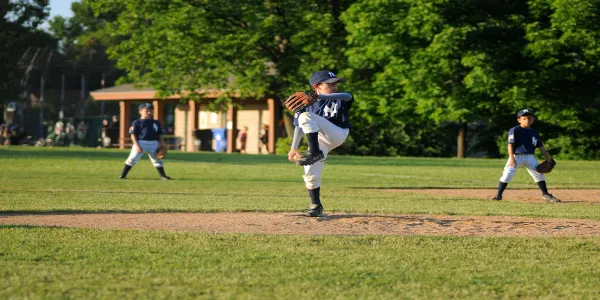
Why is the pitcher so important?
The pitcher's job is to throw the ball in a way that makes it hard for the batter to hit it. If the ball goes into a certain area over the home plate, called the strike zone, it's called a strike.
When standing in their normal batting position, the strike zone goes from the batter's armpits to the top of their knees. If the pitcher throws three strikes, the batter is out, and the next batter comes up to bat.
The ultimate goal is for the pitcher to prevent the opposing team from scoring runs and to help their team win the game.
How is the pitching distance measured?
Before we look at pitching distances and ages in Little League baseball, we must understand how pitching distance is measured.
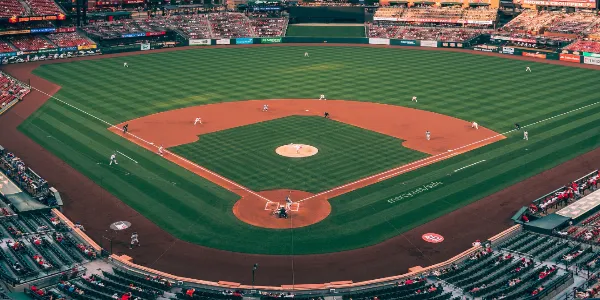
Pitching distance is measured from the pitcher's plate's front edge to the home plate's back point. Also known as the rubber, the pitcher's plate is a rectangular rubber slab 24 inches long and 6 inches wide. The pitcher's plate is placed on the pitcher's mound, which is raised to a height of 6 inches above the level of the field.
Now, the back point of the home plate is the point where the two edges of the plate meet at a 90-degree angle. The distance between the front edge of the pitcher's plate and the back point of the home plate is the pitching distance.
Little League baseball pitching distance by age
The pitching distance in Little League baseball varies according to the different age groups of the players. Here is a breakdown of the pitching distances for each age group.
How far do 6-year-olds pitch from?
For 6-year-olds, the pitching distance in Little League baseball is 30 feet. At this age, players generally play in the Tee Ball league, an introductory level for young players. The shorter pitching distance allows players to learn the basics of throwing and catching without being overwhelmed by the distance.
How far is a 7-year-old pitcher's mound?
A 7-year-old's pitching distance in Little League baseball is 30 feet. Players can play in the Coach Pitch division at this age, a step up from the Tee Ball league. Coaches should focus on teaching proper throwing techniques, encouraging players to have fun, and developing a love for the game.
How far do 8-year-olds pitch from?
For players who are 8 years old in the Little League, the pitching distance depends on the division in which they are playing.
In the Coach Pitch division, the pitching distance is generally 46 feet. Players gradually develop their skills and build up their arm strength.
What is the Little League baseball pitching distance for 9-year-olds?
The pitching distance for 9-year-olds in Little League is also 46 feet. Players often play in the Minors division at this age, and many are still adjusting to the longer pitching distance.
It's important to note that some 9-year-olds may not be ready for the longer pitching distance, and coaches should work with these players to find a distance appropriate for their skill level.
How far is a 10-year-old pitcher's mound?
For 10-year-olds playing Little League baseball, the pitching distance is 46 feet. Players usually play in the Minors division at this age, a step up from Coach Pitch. The longer pitching distance allows players to develop more strength and accuracy in their throws.
Coaches must understand that 10-year-olds are still developing physically and may have a different level of strength and coordination than older players.
Little League pitching distance for the Minor League division
The Minors division includes players aged 5-11. The pitching distance for minor league is 46 feet, the longest distance for this age.
At this level, players are expected to have developed some strength and accuracy in their throws.
Little League pitching distance for Majors
The Major division in Little League baseball includes players ages 9-12. The pitching distance for this division is 46 feet.
At this level, as the players get older, they are expected to have developed even more strength and accuracy in their throws.
Pitching from a slightly longer distance helps to challenge and develop these skills further and prepare players for the longer distances they'll encounter as they progress through higher levels of play.
For 12-year-olds, pitching from the same distance as the previous year it helps players maintain consistency while refining their form and technique.
Little League baseball pitching distance for 13-year-olds
Many 13-year-olds play in the Intermediate division, where the Little League baseball pitching distance is 50 feet.
At this age, players are preparing to transition to regulation pitching distance, and pitching from a slightly longer distance helps to build arm strength and refine mechanics gradually.
As they move to the Senior league divisions, the pitching distance increases to 60 feet, 6 inches. Coaches and parents must monitor pitch count and rest periods to prevent injury and support healthy development.
The pitching distance for softball in Little League varies depending on the age of the players. Pitching distances are shorter compared to baseball to account for the smaller size of the ball.
For 10U and under, the pitching distance is 35 feet. For 12U, it's 40 feet; for 14U, it's 43 feet; for 16U, it's 46 feet.
As in league baseball, coaches should focus on teaching proper techniques and gradually building arm strength over time. Players need to focus not only on their pitching skills but also on their defensive skills, such as fielding and throwing.
Are pitch count limits important?
Pitch count limits and rest periods are incredibly important for preventing injury and ensuring the health and safety of Little League baseball players. The following are guidelines for pitch counts during games and rest periods between pitching for players up through age 16:
1. Ages 7 - 8 years old
For players who are 7-8 years old, the recommended maximum pitch count per game is 50 pitches, and they should have at least one day of rest between pitching appearances. If a player pitches 26-40 pitches, they need at least one day of rest. They don't need to rest if they pitch 1-25 pitches, this applies to all ages in Little League Baseball.
2. Ages 9 - 10 years old
Team managers must ensure that after 75 pitches, players 9-10 years old should have at least two days of rest before playing baseball again. If a player pitches 26-40, they require at least one day of rest.
3. Ages 11 - 12 years old
Players 11-12 years old should pitch a maximum of 85 pitches per game and should have at least three days of rest between games if they pitch more than 40 pitches in a game. If a player pitches 26-40, they require at least one day of rest.
4. Ages 13 - 14 years old
For players 13-14 years old, the recommended maximum pitch count per game is 95 pitches, and they should have at least four days of rest if they pitch more than 40 pitches in a game. If a player pitches 26-40, they must have at least one day of rest.
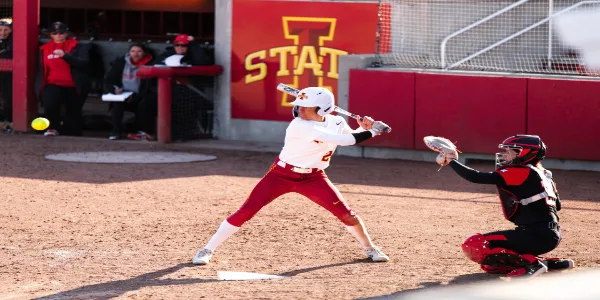
5. Ages 15 - 16 years old
Managers of Little League baseball teams must ensure that players 15-16 years old have at least four days of rest between pitching appearances if they pitch more than 40 pitches in a game. The recommended maximum pitch count per game is 105 pitches.
If a player pitches 26-40, they require at least one day of rest. It's important to note that these are general guidelines, and coaches and parents should also consider each player's individual needs and abilities.
It's also important for players to listen to their bodies and communicate with their coaches if they are experiencing any discomfort or pain.
By following the pitch count and rest period guidelines, young baseball players can safely develop their skills, enjoy the game for years, and possibly play in the Little League World Series.
The dimensions of the Little League baseball diamond
Little League Baseball field is designed to be age-appropriate for the players in each division. Little League baseball has smaller dimensions in every aspect, from the distance between the bases to the dimensions of the infield and outfield.
The distance between the bases is 60 feet for all divisions. However, the distance from the pitcher's mound to home plate varies depending on the division.
The outfield fence distance varies depending on the division and the specific field but is usually between 150 and 225 feet. These dimensions ensure the game is challenging and safe for young players.
What are the different pitching styles?
Pitching in baseball involves two main pitching styles:
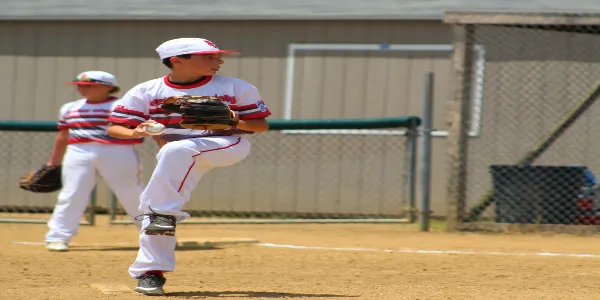
The windup is used when there are no baserunners, while the stretch is used when runners are on base. Both styles have different techniques and can be used to gain an advantage over the hitter.
The windup
In the windup, the pitcher begins with both feet on the rubber and their body turned sideways to home plate. They lift their front leg, rotate their hips and torso, and bring their throwing arm back before delivering the pitch.
The windup can be more complex and fluid; some pitchers may use it to help disguise their pitches.
The stretch
In the stretch, the pitcher begins with one foot on the rubber and the other on the ground. They generally hold the ball in front of their body and then come set by bringing their hands together and holding them at their chest before delivering the pitch.
The stretch allows pitchers to deliver the ball to home plate and can be used to help control the running game by limiting the time it takes for the pitcher to deliver the ball to the catcher.
Pitchers must develop a consistent and repeatable delivery regardless of their pitching style. This helps ensure they can maintain control and accuracy while throwing their pitches.
Pitchers should also pay attention to the batter and any runners on base, as this may affect which pitching style they choose to use.
Tips for parents
So, your child is interested in learning to pitch or play Little League baseball or softball. Here are some tips for parents to keep in mind:
1. Encourage a love of the game
Make sure your child plays because they enjoy the sport, not just because you want them to. Encourage a positive attitude, focusing on learning and improving rather than just winning or losing.
2. Start slow and build gradually
It's important to start with the basics and gradually build skills and abilities. Make sure your child has mastered one skill before moving on to the next, and avoid pushing too hard too fast.
3. Focus on proper technique and safety
Make sure your child uses the proper technique when pitching or playing the sport, and prioritize safety at all times. Teach your child to listen to their body, rest when needed, and ensure they are wearing appropriate safety gear.
4. Monitor pitch counts and rest periods
As mentioned earlier, monitoring young pitchers to prevent injury and support healthy development is important. Ensure your child is pitching sparingly, and allow plenty of rest between games and practices.
5. Be supportive and positive
Finally, be supportive and positive throughout the learning process. Touch base with your child often. Chat about their games. Be there to celebrate their successes and help them learn from their mistakes.
Tips for coaches
Coaches are important in helping young players develop their pitching skills.
Coaches, here are some tips to remember:
1. Focus on good technique
Proper throwing techniques are crucial to prevent injury and develop accuracy and strength. Work with players to use proper techniques and adjust as needed.
2. Slowly increase distance and intensity
Increasing the pitching distance and intensity gradually over time is important to prevent injury and ensure players are ready for the challenge.
3. Encourage rest and recovery
Pitching can be physically demanding, and players need to take breaks and rest to prevent injury and ensure that they are performing at their best.
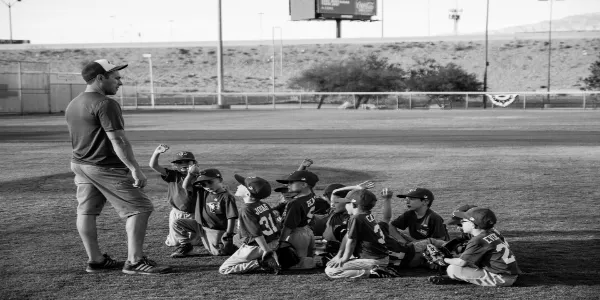
4. Emphasize fun and sportsmanship
Ultimately, Little League is about having fun and learning valuable life skills. Coaches should emphasize sportsmanship and encourage players to enjoy the game.
Frequently asked questions
What is the Little League pitching distance?
The little league pitching distance is determined by the age group of players. The various distances give young pitches time to develop their pitching skills while allowing fair competition within their age group and teams.
How far do 6-year-olds pitch from?
For 6-year-olds, the pitching distance in Little League baseball is 30 feet.
How far is a 7-year-old pitcher's mound?
The pitching distance for 7-year-olds is 30 feet.
How far do 10-year-olds pitch from?
For 10-year-olds, the pitching distance is 46 feet.
How far is a 12-year-old pitching mound?
12-year-olds generally pitch from 46 feet. If they have mastered this distance, they can try pitching from slightly further.
What is the distance for pitching in Little League?
The pitching distance varies according to age. It starts at 30 feet for the 6-year-old and is increased gradually to 50 feet for the 13-year-olds.
In conclusion
Little League pitching distance varies depending on the age of the players. It's important for coaches and parents to understand the rules and guidelines for each age group and to focus on proper technique, gradual development, fun, and sportsmanship. By following these tips, young players can develop their pitching skills and learn valuable life skills that will serve them well on and off the field.
Thalia Oosthuizen has been writing in a professional capacity for over a decade. Her love for sports has led her down the path of sports writing, where her passion and skills combine. Thalia is a runner, cyclist, and swimmer, and enjoys playing tennis and hockey. Her favorite sports teams include Chelsea F.C. and the Georgian Lions Rugby Club.



